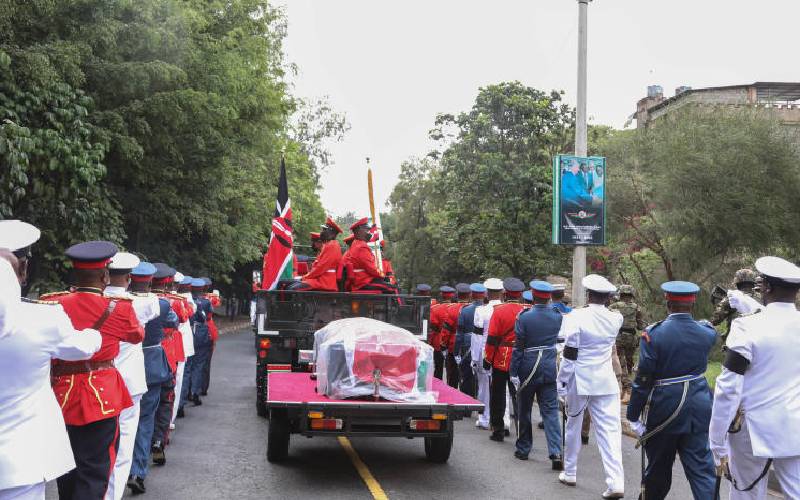×
The Standard e-Paper
Stay Informed, Even Offline

The skies frowned, the sun coyly hid behind forlorn clouds and Nairobi City shivered as the body of Kenya’s third president Mwai Kibaki made its final lap of the capital yesterday morning.
Pregnant clouds gathered and from time to time gave way to light showers that swept the tarmac clean.